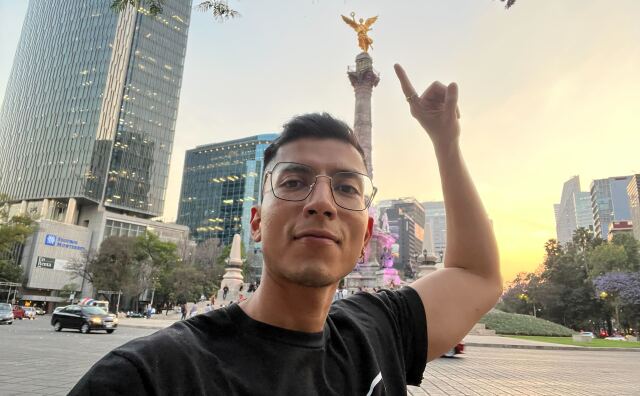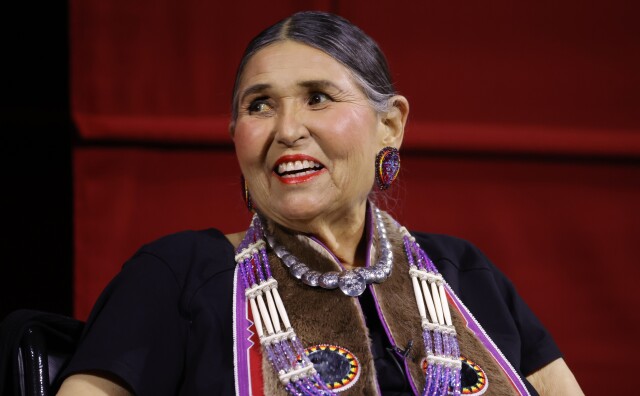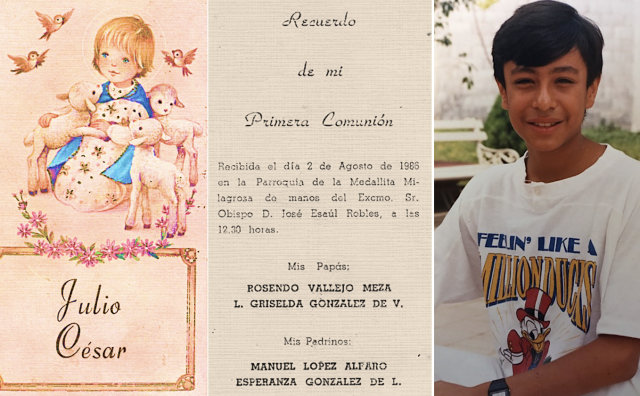I’m told I look exotic by some people when they initially meet me. They ask, “Where are you from?”
-
From June 2020 to July 2021, we published your stories each week to continue important conversations about race/ethnicity, identity and how both affect our lived experiences. We now have a new series Being American, which is again soliciting your essays.
-
Read:
When I reply, “I am from the Valley,” they usually follow up with, “No, where are you really from?” This is a question I have always had a hard time answering.
I’m a first-generation American Latina, born and raised in the San Fernando Valley, part of Los Angeles County and just northeast of downtown L.A.
My father was born in Mexico and my mother in El Salvador. They left their home countries in search of The American Dream, and they found each other in the Valley.

Mexico and El Salvador share a comparable history in many ways, and similar cultural traditions, but there are distinct attributes that make each country uniquely beautiful.
At home, I embraced both cultures as one. I spoke Spanish, watched telenovelas, listened to rancheras and cumbias, and my mother cooked both Mexican and Salvadorian dishes. I believed I had the best of both worlds: tacos and pupusas.
My parents never talked about the differences between Mexico and El Salvador, because it did not matter. However, outside my home, things were different.
I learned that there were differences in cultural values between what I was taught at home and outside. At home, my parents taught me to be humble and respectful, while U.S. culture values individualism and meritocracy.

As a first-generation American, I had to assimilate into mainstream American culture to fit in. I learned to speak English, listened to hip-hop and rock music, ate hot dogs and cheeseburgers, and played baseball at school. But people treated me differently. The white boys in my school would yell at me, Go back to where you came from!
“Go back to my house?” I naively thought when I heard those words for the first time as a child. I experienced xenophobia at a young age. At the time I lived in North Hollywood, and the white boys in my elementary school bullied me because I was Latina. I quickly learned to avoid certain people and places.
Caucasians and middle-class residents once dominated the Valley. But, by the 1990s, the Valley had become more urban and more ethnically diverse, which led to white flight. The Valley’s Caucasian population decreased, while the Latino and Asian populations grew. The Mexican community was the largest ethnic group.
When my parents saved enough money to buy a home, we moved to Pacoima, which, by that time, was largely Latino.

When I noticed the students at school were predominantly Latinos, too, I thought I would be safe. However, to my dismay, I had more bullies confronting me than before.
“You’re not a real Mexican,” “You’re a mutt,” and “Cerote!” These were some of the common insults and slurs that the Mexican American kids yelled at me when I shared my ethnic background as both Mexican and Salvadorian.
They teased me because they did not consider me to be Mexican enough. I didn’t understand their rejection or why they perceived me so negatively, but later, I learned about the animosity that exists between Mexicans and Salvadorians.
I don’t know how the rivalry began, but I suspect it might have started with competition over resources. In the 1980s, after the civil war began in El Salvador, large numbers of that country's citizens migrated north to the United States.

As they passed through Mexico, many experienced hardships that escalated the hostility. The misgivings intensified when Salvadorians reached the U.S. and competed for jobs with Mexicans, some of whom resented the newcomers and saw them as taking away work and resources.
Salvadorians, meanwhile, felt resentment that they had to conceal their culture and adopt certain behaviors to fit into Mexican communities in order to access those resources and jobs.
'You Don't Count'
This inter-ethnic animosity conflicted me. I felt marginalized by my culture — both sides of it — and I lacked a sense of belonging. My self-identity became diminished, and that led to low self-esteem. As a defense mechanism, I stopped sharing my ethnicity.
People assumed I was only Mexican, and I did not correct them. I wanted to avoid the stigma and marginalization I had experienced, so I closed myself off and stopped embracing my Salvadorian culture. But in doing that I also denied my identity, and part of myself.
During middle school and high school, I shared my ethnicity with very few people. I constantly struggled with the negative perceptions of my identity that continuously impacted my self-esteem. I would laugh at jokes made about Salvadorians, or agree with the negative stereotypes people shared about them.
After I graduated from high school, I thought the marginalization would stop. I was no longer forced to socialize with intolerant schoolmates. But as an adult, I still dealt with it.

Once, my friends did not consider me Mexican enough to judge a casual pozole contest we’d organized. They told me, “You’re not really Mexican, and you don’t count.”
I sought clarity on my identity, and guidance on how to cope with my internal conflict. After five years working in the beauty industry, I returned to school, first to community college, then to UC Santa Cruz, and my life changed.
My professors opened a new world to me, as a sociology major, when I was introduced to contemporary theorists such as Antonio Gramsci, W.E.B. Du Bois, and Gloria Anzaldúa. Reading their works helped me gain a new perspective on my life.
Reading Gramsci, an early 20th Century Italian philosopher, and his concept of cultural hegemony, helped me understand why my Mexicans peers had rejected my Salvadorian culture. Cultural hegemony refers to the oppression by the dominant social group through ideological or cultural means. Usually achieved through social institutions, it allows those in power to influence the values, norms, ideals, expectations, world views and behavior of the rest of society.
I also learned that building on his definition, there is what some have called “Mexican hegemony,” which refers to the marginalization and erasure of Central American people in predominantly Mexican spaces. Because Mexicans are the dominant Latino majority in L.A., with far greater cultural and political influence, this can lead to intergroup marginalization.
Du Bois and Anzaldúa helped me understand the dual consciousness I created as a young person to survive. Du Bois wrote about the double-consciousness that Black Americans experience, a “sense of always looking at one's self through the eyes of others.” He explained that Black people must have two visions of themselves: They must be conscious of how they view themselves, and simultaneously aware of how the world views them. It was a reality I could relate to.
Anzaldúa described “borderlands” as a geographical area that is prone to “la mezcla” or hybridity, as well as invisible borders — and a growing population that is neither fully of Mexico or the U.S., and has learned to become a part of both worlds. She described the “mestiza consciousness” as a survival strategy, and that to fight against cultural tyranny, we need to understand our dominant culture, what it represents, and what its effects are.
A 'Mexidorian'
I didn’t feel accepted by either side of my culture for a long time. I felt alone, confused, and misunderstood. The knowledge I gained through these authors helped me understand the experiences I encountered, and I felt empowered to embrace all my cultures as one:

I’m a Mexidorian. Mexican, Salvadorian, and American.
All my cultures help create the person I am.
But xenophobia is still tearing our communities apart. A deeply polarized America persists on focusing on the differences, instead of the similarities.
Although I was born in the U.S., some Americans don’t consider me a real American. Some Mexican Americans insist I’m not Mexican enough because of my Salvadorian background. And when I visit Mexico, Mexicans call me a gringa, because I was born in the U.S.
I share my story to let other multiethnic Latinos know they are not alone in feeling conflicted. This is not to bash on Mexicans — after all, I’m Mexican too — but rather to inform our community of the devastation that a multiethnic individual experiences because of inter-ethnic xenophobia.
We should not divide ourselves by ethnicity or nationality. Latinos face similar inequalities, and we need to come together to bring about group solidarity in order to change the conditions of marginalization and exploitation that all Latinos face.
-
Flor Arellano is a first-generation cisgender Latina born and raised in the San Fernando Valley. After working in the beauty industry as a hairdresser, make-up artist and massage therapist, she returned to school and received her AA in sociology from Los Angles Mission College in 2017, then her BA in sociology from UC Santa Cruz in 2019. Flor was recently accepted to UC Irvine to pursue a Master’s in Public Health focusing on sociocultural diversity and health. She currently works for UCLA Health as a research assistant.












